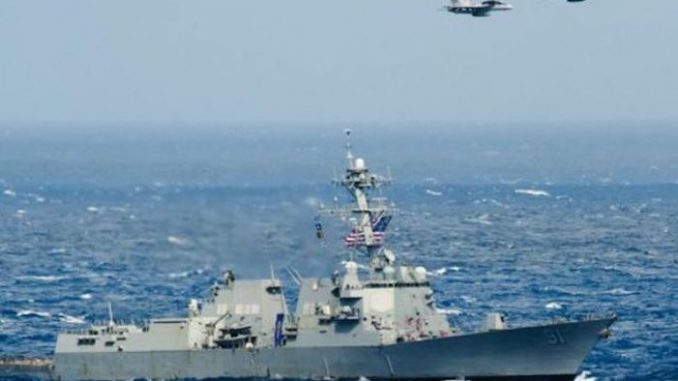
US officials have confirmed that two Russian warplanes flew “simulated attacks” this week near a US warship stationed in international waters near Russia.
Two unarmed Russian Su-24 fighter jets came extremely close to the USS Donald Cook that they created “a wake in the water”, US officials say.

BYPASS THE CENSORS
Sign up to get unfiltered news delivered straight to your inbox.
You can unsubscribe any time. By subscribing you agree to our Terms of Use
Latest Video
Sky News reports:
The overflights are said to have occurred on Monday and Tuesday and were described by US officials as “more aggressive than anything we’ve seen in some time”.
White House press secretary Josh Earnest said the incident “raises serious safety concerns” and the US is “concerned about this behaviour”.
On 11 April, two Russian Su-24s made 20 passes of the US Navy ship, according to the officials, passing within 1,000 yards at an altitude of just 100ft.
The American ship had just left the Polish port of Gdynia and was in the Baltic Sea about 70 nautical miles off Kaliningrad, said US officials.
On 12 April, two Russian jets again buzzed the ship in what officials described as “simulated attack profile”.
The aircraft were said to have swooped in the same flight mode that would have been used for an actual attack.
In one of the incidents, a Russian jet is said to have flown just 30ft (9 metres) above the destroyer.
Earlier that same day, two Russian Ka-27 Helix anti-submarine helicopters are said to have circled the USS Donald Cook seven times, taking photos.
A US official told CNN the Russian manoeuvres amounted to mock “strafing runs”.
The Russian planes did not respond to attempts by the USS Donald Cook’s crew to contact them by radio, said the US officials.
The American ship’s commander is said to have deemed the Russian actions “unsafe and unprofessional”.
The US believes the overflights breached a 1970s agreement designed to prevent unsafe incidents at sea.
The incidents come as diplomatic tensions continue between Moscow and Washington over the conflicts in Ukraine and Syria.
Nato is currently planning its biggest Eastern European build-up since the Cold War to counter what the alliance says is a more aggressive Russia.


